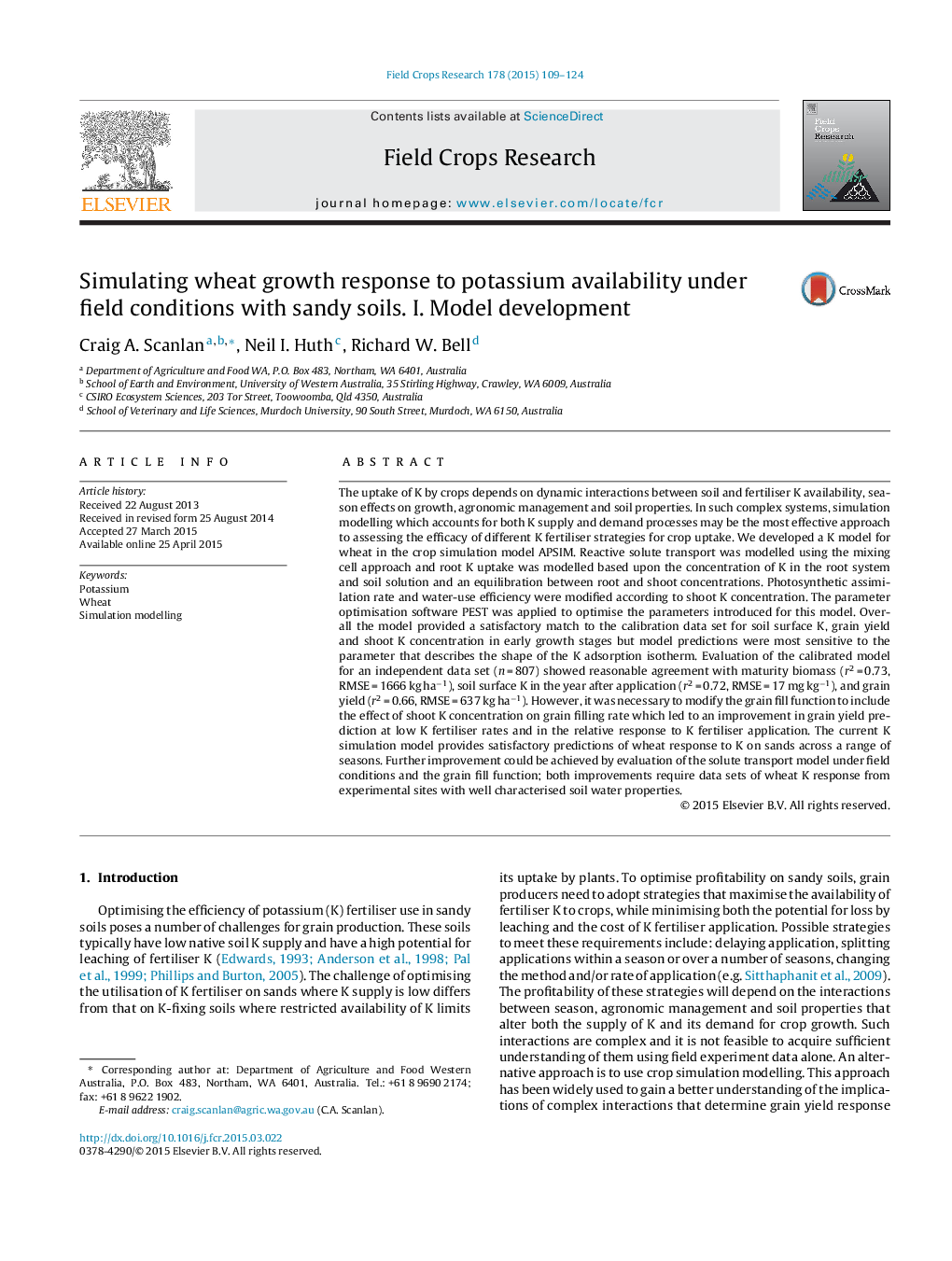| Article ID | Journal | Published Year | Pages | File Type |
|---|---|---|---|---|
| 6374846 | Field Crops Research | 2015 | 16 Pages |
Abstract
The uptake of K by crops depends on dynamic interactions between soil and fertiliser K availability, season effects on growth, agronomic management and soil properties. In such complex systems, simulation modelling which accounts for both K supply and demand processes may be the most effective approach to assessing the efficacy of different K fertiliser strategies for crop uptake. We developed a K model for wheat in the crop simulation model APSIM. Reactive solute transport was modelled using the mixing cell approach and root K uptake was modelled based upon the concentration of K in the root system and soil solution and an equilibration between root and shoot concentrations. Photosynthetic assimilation rate and water-use efficiency were modified according to shoot K concentration. The parameter optimisation software PEST was applied to optimise the parameters introduced for this model. Overall the model provided a satisfactory match to the calibration data set for soil surface K, grain yield and shoot K concentration in early growth stages but model predictions were most sensitive to the parameter that describes the shape of the K adsorption isotherm. Evaluation of the calibrated model for an independent data set (n = 807) showed reasonable agreement with maturity biomass (r2 = 0.73, RMSE = 1666 kg haâ1), soil surface K in the year after application (r2 = 0.72, RMSE = 17 mg kgâ1), and grain yield (r2 = 0.66, RMSE = 637 kg haâ1). However, it was necessary to modify the grain fill function to include the effect of shoot K concentration on grain filling rate which led to an improvement in grain yield prediction at low K fertiliser rates and in the relative response to K fertiliser application. The current K simulation model provides satisfactory predictions of wheat response to K on sands across a range of seasons. Further improvement could be achieved by evaluation of the solute transport model under field conditions and the grain fill function; both improvements require data sets of wheat K response from experimental sites with well characterised soil water properties.
Keywords
Related Topics
Life Sciences
Agricultural and Biological Sciences
Agronomy and Crop Science
Authors
Craig A. Scanlan, Neil I. Huth, Richard W. Bell,
